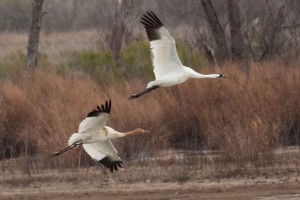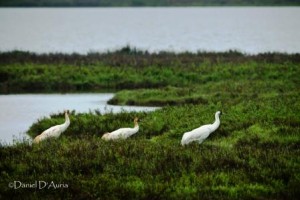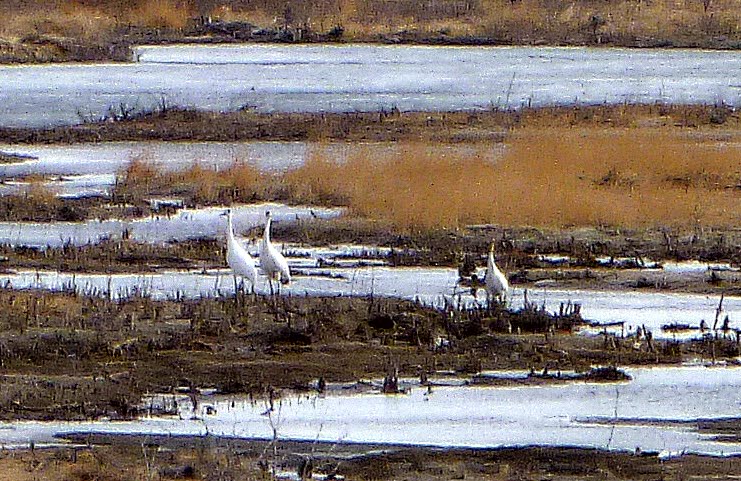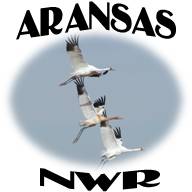Louisiana Whooping Cranes – February 2012
By: Sara Zimorski, Louisiana Department of Wildlife and Fisheries.
2010 Cohort
After dispersing away from the release pen most of the birds from this group of 10 left the marsh and moved north into agricultural areas, primarily rice and crawfish. As previously reported 1 bird became sick and was euthanized, 1 bird was likely killed by a predator, and a third bird disappeared and is presumed dead.
Summer research of the remaining 7 focused on evaluating the habitat chosen by the birds. In early October, 2 birds in a group of 3 were shot and killed by a pair of teenage boys. An eyewitness reported the shooting and state law enforcement agents were able to apprehend the suspects and move forward with pressing charges. The case will be going to court in the very near future. The third bird’s transmitter failed and she disappeared at the same time the others were shot. With no additional data or sightings she is missing and presumed dead and foul play is suspected to be a factor in her disappearance. As a result of the shooting incident the Louisiana Department of Wildlife and Fisheries has stepped up our outreach and education efforts, including working to develop Whooping Crane‐related lesson plans and curriculums that will be incorporated into public school classes for middle and high school students.
Unfortunately in late November an additional bird was killed, likely by a predator, reducing the 2010 cohort to only 3 survivors. The 3 survivors remain separate from each other with 2 remaining in agricultural areas and the third returning to the pen and joining the new group of chicks.
2011 Cohort
On 1 December 2011, a second cohort of birds was shipped to Louisiana from the Patuxent Wildlife Research Center. As with the first cohort, the 16 new birds (7 males, 9 females) were initially held in the top‐netted pen. Permanent bands and transmitters were attached to their legs on 8‐9 December and the birds were released into the open pen on 27 December.
On 31 December L4‐10, a survivor from the first cohort, returned to the pen site and joined the 16 chicks. He had spent almost all summer and fall in the marsh just west of the release area and therefore had the strongest ties to the area. The 16 juveniles initially attempted to chase him away and while they continue to keep him away from the food shelter and the feeders they have generally become more tolerant of his presence. Food continues to be provided for the birds in the open pen but will be discontinued in the next few weeks.
The birds have shown a similar pattern of movement and pen use to the previous cohort – roosting outside the pen at night but using the pen during the day, primarily in the afternoons. However, with more water across the marsh this group of birds is beginning to range further away from the pen and use areas on the east side of the property which the first cohort did not use.
On 4 January, chick L14‐11 was handled to replace the original transmitter she had been given which was not functioning properly and during this time she apparently suffered an injury that left her unable to fly. On 19 January she was brought to the LSU vet school for evaluation and radiographs revealed a fractured leg coracoid bone. In order to give her the best chance of recovering the ability to fly and be released in Louisiana, surgery was performed on 27 January.
Surgeons at the vet school realigned the ends of the fractured bone and attached a small metal plate to stabilize the site. Her recovery is going well thus far and we are hopeful she will soon be able to fly again so she can live in the wild in LA with the rest of the cohort.
Unfortunately one chick, L12‐11, disappeared on 3 February. With no data from his transmitter and no sightings since then he is believed to be dead. As of 17 February, 18 (8 males, 10 females) birds remain alive in LA.
Article from The Unison Call, newsletter of the North American Crane Working Group






